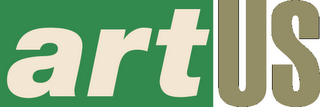
http://www.artext.org
if you missed the entorno show then you can see it online here
"Entorno" by Brian Griffis
Polvo, Chicago, IL April 28 - May 20, 2006
from ArtUS Magazine
Chicago is currently undergoing efforts to become the greenest city in the country.Thanks to Mayor Daley's green agenda, new building projects receiving city tax breaks will now be required to have a "green roof" partially or completely covered with plants. This green-roof architecture will provide partial yet massively scaled solutions for urban water drainage and energy consumption. Given the current national direction of environmental deregulation, such policies should be applauded. But as greening movement they also need to be considered within the ongoing historical and political setting of the city along lines linking and separatingall the colors in the rainbow coalition.
Polvo Art Collective's "Entorno: Grass Grows Greener on the Other Side" takes on the spatial and historical politics of color, where so-called green urbanism meets racial redlining. Meaning "environment" in Spanish,"Entorno" immediately situates itself in the ambivalent engagement between American green values, be it of the suburban lawn variety or more current ecological fronts, and a largely divided population. Organized by Polvo founders, Eivia Rodriguez- Ochoa, Miguel Cortez and Jesus Macarena-Avila, the exhibition brings together an array of artifacts by 14 artists and collectives, from performance to mixed-media installation to documentary, which attempt to solicit invested perspectives rather than universalizing totalities.
One critical sub-theme concerns the bureaucratic language used to represent and facilitate spatial planning. For example, Miguel Cortez's 2006 City of Chicago Displacement Map combines personal utterances with a map of Chicago's evolving housing program. The point is that even though cartography is used to disperse traditional public housing residents into genuine neighborhoods, critics of the program use the same techniques to reveal that such dispersion actually maintains the very racial segregation supposedly being challenged. As one map denizen states, You feel like everyone is staring at you, saying mmmhmmm, she's a section 8." Area Chicago,a recently inaugurated political cultural publication, contributed a series of city maps created by readers and other local participants. Drawn, printed,and collaged onto a minimal template provided by Area, the maps included multi-layered and serious investinations of land use in the citv as well as the idiosvncratic interpretations of local high schoolers. Chicago-based performance and spoken-word artist Anida Yoeu Esguerra's What's Green? (2006) juxtaposed her animated body with loaded imagery of disposable plastic "Thank You" bags and street-level city views. Jesus Macarena-Avila's Extinction of a ghetto Artist (2006) presented us with a small cassette player atop an uncomfortable memorial mound. Suspended from a telephone wire several feet above the piece was a pair of sneakers, pointing uneasily to the conspicuous absence ofa contingent body.
Israeli architect Eyal Weizman has written about the "politics of .. verticality"-the vertical delineation of boundaries governing things like access to airspace, transportation, and water. Weizman's analysis of Israeli spatial militarism seems to have something to offer in consideration of Chicago's racialized spatial politics. Are the Mayor's proposed rooftop naturestrips yet another way the city can continue to ignore the environmental health of its citizens? And is the height of telephone poles an appropriate distance from which to police the city with surveillance cameras, a policy highlighted by a Mess Hall Collective exhibit? "Entorno" also includes "uncomfortable" civic projects like the Citizen and Voter Training School, Pilsen Ayuda, and Pilsen Environmental Rights Organization. Perhaps what we're seeing now, with the growth of environmental justice movements, is an integration of horizontal and vertical perspectives, those able to see where the neighborhood lines are drawn but also where vertical slices of the pie are shared.
**download the PDF scan
No comments:
Post a Comment